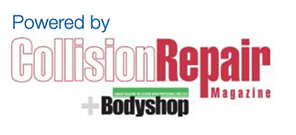Direct Compensation Property Damage (DCPD) coverage, which was previously a compulsory element of no-fault car insurance in Ontario, has seen a shift. As of January 1, 2024, policyholders in Ontario have the freedom to exclude DCPD coverage from their plans at their discretion. This overview will explore the implications of this adjustment for you:
Understanding No-Fault Insurance: The term “no-fault insurance” might be misleading, as it does not imply an absence of fault in vehicular incidents. Rather, it delineates the process of claim settlement, wherein you liaise directly with your insurer for any claims, irrespective of who is to blame for the accident. This framework is prevalent across several Canadian provinces, including Ontario, Quebec, Alberta, British Columbia, Nova Scotia, New Brunswick, Newfoundland and Labrador, and PEI. Notably, DCPD is not applicable within British Columbia’s no-fault system, where Basic Vehicle Damage Coverage (BVDC) is in effect, offering up to $200,000 for vehicular damages.
DCPD Coverage Explained: Following an accident, your insurer’s investigation determines your fault percentage, ranging from 0% to 100%, to ascertain your degree of liability. Being deemed 50% at fault indicates shared responsibility.
Within the no-fault insurance model, DCPD covers your vehicle’s damages in accidents where you are not the liable party, provided another involved vehicle is insured under a motor vehicle liability policy by an insurer recognized in the province of the accident or adheres to DCPD guidelines. This coverage ensures reimbursement for repairs or replacement of your vehicle to facilitate a swift return to normalcy.
DCPD covers the following for non-fault accidents:
- Vehicle damage, including loss of use
- Damage to personal belongings in the vehicle at the accident time, excluding cargo transported for payment (referred to as “contents carried for reward” in your policy)
DCPD is a component of no-fault insurance systems, guaranteeing compensation for your vehicle’s damage in non-fault collisions.
Options for At-Fault Collisions: If you are at fault in a collision, vehicle damage coverage is contingent upon having optional all-perils or collision coverage. Consult with a licensed car insurance broker to ensure adequate coverage for at-fault accidents.
Implications of Opting Out of DCPD Coverage: From January 1, 2024, in Ontario, you can withdraw from DCPD coverage by submitting written consent and a signed acknowledgment form, foregoing this protection. Those financing or leasing their vehicles must obtain approval from their financier or lessor before opting out.
Opting out of DCPD means you forfeit the right to claim damages from your insurer, the responsible party, or their insurer after an accident, regardless of fault. Without DCPD, Collision, or All perils coverage, you will bear out-of-pocket costs for post-collision expenses, such as towing, storage, or rental vehicles, which might exceed any premium savings.
To reintegrate DCPD coverage, contact your broker for policy adjustment.
It’s critical to carefully consider your options. For any policy or coverage inquiries, reach out to your broker.


